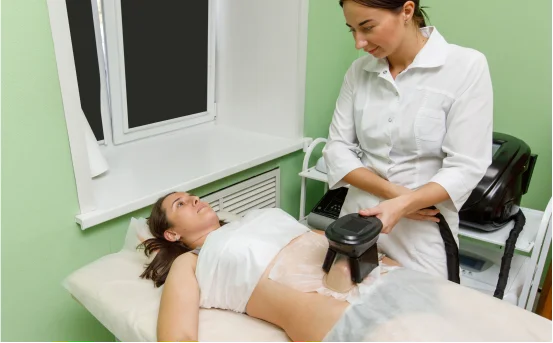Introduction
Burn injuries can have devastating effects on the skin, muscles, and underlying tissues. Beyond the immediate medical concerns of treating the burns, many patients are left with lasting scars, contractures (tightened skin that limits movement), and deformities that affect both appearance and function. Burn reconstruction surgery is a specialized surgical approach aimed at repairing and improving the physical and aesthetic outcomes of severe burn injuries.
This form of surgery focuses on restoring normal function to affected areas, enhancing appearance, and improving quality of life for burn survivors. Since burn injuries often leave behind complex tissue damage, burn reconstruction is usually performed in stages and may involve a combination of techniques. These procedures are tailored to the unique needs of each patient, considering the extent of the burns, their location, and the desired outcomes. Below are the key aspects of what is burn reconstruction surgery and what it entails.
What is Burn Reconstruction Surgery?
Purpose of Burn Reconstruction Surgery
The primary goal of burn reconstruction surgery is to restore function and appearance to areas damaged by burns. Burn scars can tighten the skin and underlying tissues, making it difficult for patients to perform everyday tasks, especially if the injuries are located around joints such as the elbows, knees, or neck.
This surgery addresses issues such as
- Scar contractures that limit movement
- Deformities caused by loss of tissue
- Functional difficulties such as impaired vision, breathing, or eating if burns affected the face
- Cosmetic concerns that impact a patient’s self-esteem and psychological well-being
By improving both function and appearance, burn reconstruction helps patients regain independence and confidence.
Timing of Burn Reconstruction Surgery
Burn reconstruction is often a staged process. Some procedures may be performed shortly after the initial injury as part of acute burn care, while others are delayed until scars mature and the patient has fully healed from the initial burn injury.
Early interventions can prevent or minimize contractures, while later surgeries are typically aimed at improving the appearance of scars or restoring function once healing is complete. The timing depends on several factors, including the severity of the burn, the patient’s overall health, and the specific goals of the surgery.
Patients should work closely with a burn specialist to develop a personalized treatment plan that outlines when each step of reconstruction will take place.
Techniques Used in Burn Reconstruction Surgery
Burn reconstruction surgery involves a variety of techniques, depending on the type and severity of the injury. Common methods include
- Skin grafting :- Transferring healthy skin from one part of the body (donor site) to the burn area to replace damaged tissue.
- Skin flaps :- Moving skin, fat, and sometimes muscle from another area of the body, along with its blood supply, to cover large or complex wounds.
- Tissue expansion :- Gradually stretching nearby healthy skin to provide additional tissue for reconstruction.
- Z-plasty and local flap surgery :- Rearranging existing skin to release tension from scars and improve mobility or appearance.
These techniques may be used individually or in combination to achieve the best possible results. The chosen method depends on the burn location, the amount of healthy skin available, and the functional or cosmetic needs of the patient.
Candidates for Burn Reconstruction Surgery
Burn reconstruction surgery is recommended for patients who have sustained moderate to severe burns resulting in:
- Contractures that limit movement or function
- Facial burns affecting the eyes, nose, or mouth
- Large areas of scarring that are painful or disfiguring
- Emotional distress due to the appearance of burn scars
Patients should be in good overall health and free from infections before undergoing surgery. Those with underlying medical conditions, such as diabetes or poor circulation, may require additional evaluation to ensure they can heal properly.
Children with burn injuries are also candidates for reconstruction, as early intervention can help prevent deformities and preserve growth and development.
Recovery Process After Burn Reconstruction Surgery
The recovery period following burn reconstruction surgery varies based on the extent of the procedure and the patient’s overall health. Patients may need to stay in the hospital for monitoring, especially after complex surgeries involving skin grafts or flaps.
During recovery, patients will need to
- Keep the surgical site clean and protected
- Attend follow-up appointments for dressing changes and monitoring
- Perform physical therapy exercises to maintain or restore mobility in affected areas
- Avoid strenuous activities until cleared by the surgeon
Full healing may take several weeks or months. In many cases, patients require multiple surgeries spaced out over time to achieve optimal functional and cosmetic results.
Psychological and Emotional Benefits
Beyond physical improvements, burn reconstruction surgery can provide significant psychological benefits. Severe burns often leave survivors with visible scars that can impact self-esteem and lead to anxiety or depression. By improving appearance and restoring a sense of normalcy, reconstruction can help patients feel more comfortable in social situations and regain confidence.
Emotional support, counseling, and support groups are often recommended as part of the overall recovery plan, as mental health is a critical component of healing after a burn injury.
Risks and Complications
As with any surgical procedure, burn reconstruction carries some risks. These can include:
- Infection at the surgical site
- Bleeding or delayed healing
- Graft or flap failure
- Poor cosmetic results requiring revision surgery
Patients should discuss the potential risks with their surgeon before undergoing the procedure. Following post-operative care instructions closely can minimize complications and improve the chances of a successful outcome.
Conclusion
Burn reconstruction surgery is a vital step in the recovery journey for many burn survivors. By addressing functional limitations, improving appearance, and boosting self-confidence, it helps patients move forward with their lives after a traumatic injury.
The procedure can involve multiple stages and a variety of techniques tailored to each patient’s unique needs. Working closely with an experienced burn surgeon and rehabilitation team ensures the best possible outcomes, both physically and emotionally.
If you or a loved one is dealing with the lasting effects of a burn injury, consulting a bus























